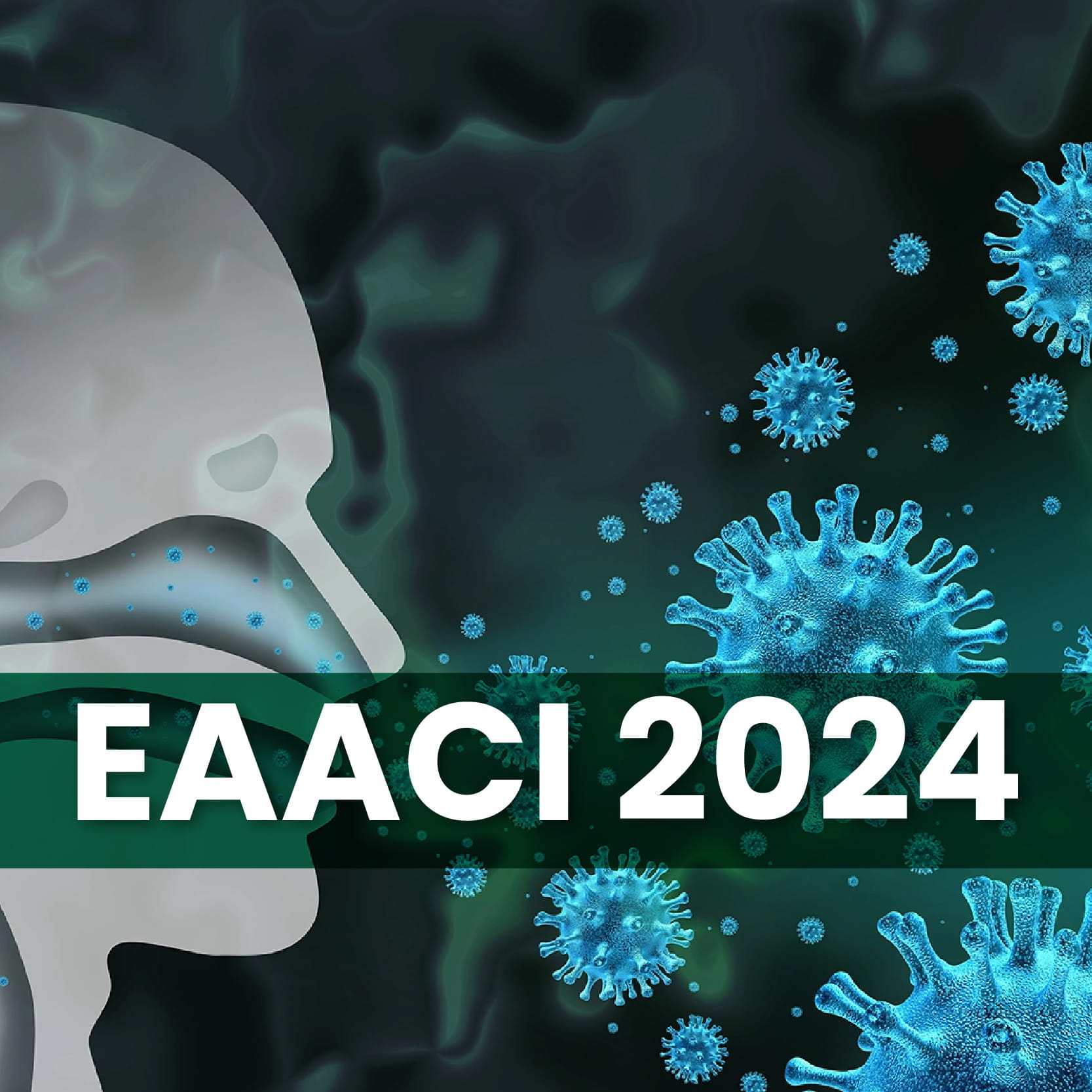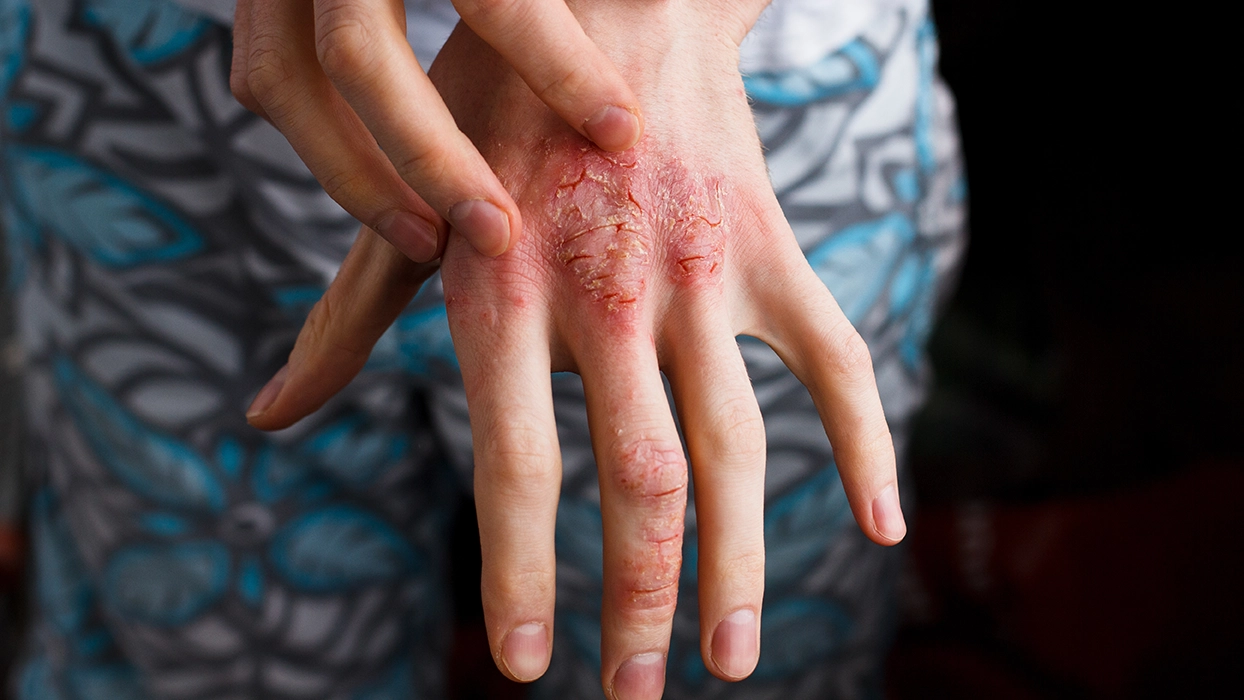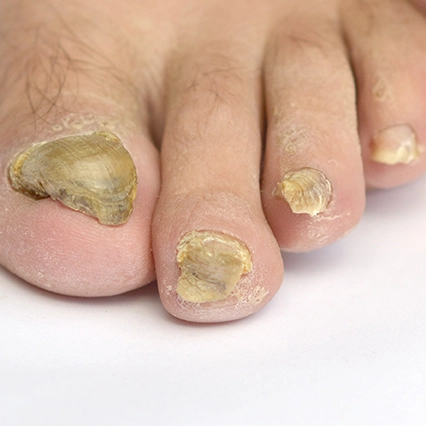EAACI 2024: Chronic Hand Eczema-Updated Guidelines
Speaker: Margarida Goncalo
The session discussed chronic hand eczema, which had been treated for a long time. It was noted as a frequent disease, with a lifetime prevalence of over 15% and a one-year prevalence of around 10%, more frequently observed in females, likely due to exposure or other reasons. Children were also frequently affected. These situations were associated with a high burden. Caring for these patients was often frustrating, as it was commonly believed that the patients were not applying creams or washing their hands excessively. However, it was suggested that the problem lay with the medications that were not very helpful at that time. It was indicated that changing times might bring improvements in treatment. This sentiment was echoed concerning many current problems faced by patients with hand eczema.
The guidelines on eczema have been updated since 2015, particularly with Thomas Diepgen, Tova Agner, and other coworkers. Additional expert guidelines from regional groups, such as Korean and Spanish colleagues, have also been included. The most recent guidelines, published in 2022 in Contact Dermatitis, were similar to those published last year by German colleagues. These guidelines encompassed various aspects such as definition, epidemiology, prevention, diagnostic workup, classification, and treatment. However, only chronic hand eczema, defined as a condition persisting for more than three months or with at least two flares within a year, was focused on. More recent data, not yet included in the published guidelines, were discussed, with ongoing efforts to develop new guidelines expected soon.
The classification of hand eczema on severity assessment and new treatment options, apart from the classical ones, was discussed. Eczema was classified based on etiology, as suggested by most current guidelines. The categories included irritant contact dermatitis, allergic contact dermatitis (especially when positive patch tests were relevant), atopic hand eczema, and protein contact dermatitis with immediate reactions to protein exposure. An increase in irritant contact dermatitis cases during COVID-19 was noted, attributed to the overuse of disinfectants. Severe allergic contact dermatitis cases from epoxy resin and atopic hand eczema in children were observed. A specific case highlighted was an atopic child with atopic hand eczema who also had allergic contact dermatitis from playing with slime-containing isothiazolinones, which was identified through patch testing. It was emphasized that physical examination alone could not determine the etiology, as the condition is often multifactorial. Problems associated with atopic hand eczema were seen to exacerbate other forms, particularly irritant contact dermatitis and protein contact dermatitis.
Chronic hand eczema was classified based on morphology, resulting in categories like hyperkeratotic forms, vesicular forms (formerly called pompholyx or dyshidrotic eczema, now termed acute recurrent vesicular hand eczema), nummular lesions on the dorsum of the hands, and fingertip involvement with pulpitis. However, this classification did not provide insights into etiology. Despite having both etiologic and morphologic classifications, they were not fully satisfactory, as only irritant contact dermatitis offered guidance on avoidance, and treatment remained largely uniform. Tape strips and skin biopsies were utilized to explore the pathophysiologic mechanisms and phenotypes of hand eczema. Researchers investigated molecular signatures, biomarkers, transcriptomics, and genomics, focusing on epidermal barrier markers, lipids, proteins, antimicrobial peptides, and the microbiome.
The inflammatory signature was particularly interesting, with markers of Th1, Th2, Th17, and Th22 cells, along with their cytokines, chemokines, and receptors, being examined. This individualized approach revealed that Th2 markers, such as IL-13 and CCR4, were higher in atopic dermatitis-related chronic hand eczema, while Th22 was also elevated. Conversely, in non-atopic dermatitis-related chronic hand eczema, Th1 and Th17 markers were higher than Th2 markers. Some differences between the two types of hand eczema had already been identified. Additionally, work had been done to distinguish irritant and allergic contact dermatitis, but the results were unclear. This was particularly due to the dependency of allergic contact dermatitis on specific allergens, which followed different pathways: Th1 and Th17 for most allergens and Th2 for fragrances and rubber. Therefore, it was suggested that allergic contact dermatitis should be considered in terms of the type of allergen rather than being generalized. Similarly, it was posited that different irritants might also result in different cytokine markers, although research was still in its early stages. It was anticipated that future research would provide more insights into these problems.
An interesting study was conducted by Dutch colleagues, who used skin biopsies to examine another subtype of chronic hand eczema, specifically chronic vesicular recurrent hand eczema. Significant elevation of certain markers was observed. For instance, the receptor for IL-4 was found to be significantly higher in lesional skin compared to non-lesional skin. Th2 markers were also elevated in chronic vesicular hand eczema, indicating a Th2 phenotype association with this subtype. It was suggested that, in addition to the current classification based on etiology and morphology, more focus should be placed on biomarkers. This approach is anticipated to aid in developing a new and more precise classification of hand eczema. Furthermore, it was proposed that during diagnostic workups, biomarkers should be considered alongside traditional methods such as examining the patient's hands, considering the history of dermatitis, assessing symptoms like itching, pain, and burning, and evaluating the localization, distribution, and type of lesions. Current diagnostic practices, such as patch testing to exclude allergic contact dermatitis and checking for irritants, might complement these new diagnostic procedures to identify eczema subtypes.
Another topic that was considered important was the examination of assessment tools for evaluating clinical trials and establishing treatment goals. These tools were discussed with patients to determine their priorities and to identify the key issues that needed resolution in hand dermatitis. Despite being somewhat subjective, the PGA from zero to four was typically used for data assessment. More objective measures, such as the hand eczema severity index (HECSI) score, were recommended. Patients were asked about their feelings, making the quality of life questionnaire for hand eczema interesting and important. An important score HECSI similar to the EASI in atopic dermatitis or the PASI score in psoriasis was suggested. This score provided objective information about the patient's condition, including erythema, infiltration, vesicles, fissures, sculling, and edema in different areas of the hands. The extent of these symptoms was calculated to determine the severity. This method allows for measuring patient improvements, aiming for goals like 75%, 90%, or 100% improvement.
Additionally, the importance of the quality of life questionnaire was emphasized. Symptoms such as pain, itch, loss of sleep, fissures, bleeding, and dryness were evaluated, along with emotional impacts like frustration, the need to hide hands, depression, irritation, and embarrassment. Patients were asked how these symptoms affected their daily activities, such as dressing and performing hygiene procedures. These aspects were deemed crucial for discussion and evaluation with patients.
The session also discussed various aspects of eczema treatment, focusing on guidelines and available therapies. It is noted that the guidelines were last updated in 2022, with development stopped in 2021. Classical treatments based on these guidelines emphasize the use of topicals with emollients, including considerations such as the presence of ceramides and preservatives. Topical steroids are recommended based on indications, with varying suggestions regarding potency and duration. Tacrolimus is highlighted as the primary topical calcineurin inhibitor supported by consistent data, unlike pimecrolimus, which presents conflicting information. Phototherapy is also mentioned as a viable physical therapy option. For severe cases of eczema, alitretinoin, a retinoid, is noted as an approved drug, achieving a favorable Physician's Global Assessment (PGA) score of 0 or 1 in approximately 40% of patients when used at higher doses. However, it is observed that the efficacy of alitretinoin appears to predominantly benefit hyperkeratotic forms of hand eczema, with less effectiveness seen in vesicular types. A significant concern is the potential for relapse upon discontinuation, although reintroduction of the drug is feasible. Monitoring for side effects, particularly its teratogenicity, is crucial due to its effects on lipids and thyroid function, which are especially pertinent in the context of predominantly female and young female patients with chronic hand eczema.
Guidelines recommend short-term oral steroids and systemic drugs as second-line options when initial treatments fail. Among systemic drugs, cyclosporine is noted, particularly for atopic dermatitis patients. Acitretin is also recommended specifically for hyperkeratotic hand eczema. Two newly approved treatments are highlighted: Delgocitinib, a cream approved in Japan, and Dupilumab, approved for both atopic and hand dermatitis. Delgocitinib, a pan JAK inhibitor, has significantly improved in patients with mild hand eczema, especially at higher concentrations, and is well-tolerated. Dupilumab, initially studied in patients with concurrent atopic dermatitis and hand eczema, demonstrated substantial improvement, with over 60% achieving HECSI-75 at 16 weeks and continuing improvements up to HECSI-90 at one year. Real-world clinical experience supports these findings, showing reductions in atopic dermatitis severity and PGA scores in hand dermatitis. Long-term results at two years indicate the potential for complete resolution (HECSI-100) in some patients. These advancements suggest promising new options for managing hand eczema, potentially offering life-changing outcomes for affected patients.
The speaker discussed the treatment outcomes observed in patients without atopic dermatitis. It was noted that chronic vesicular hand dermatitis and hyperkeratotic hand eczema, which typically show inflammatory characteristics similar to atopic dermatitis, responded well to dupilumab, as demonstrated by colleagues from the Netherlands. Significant improvements were observed in the HECSI scores, with scores reducing from HECSI 95 to HECSI 75 upon administration of dupilumab. Furthermore, the efficacy of JAK inhibitors, particularly Upadacitinib and Abrocitinib, in treating hand eczema was highlighted, showcasing rapid improvements in eczema severity measured by HECSI scores. Comparisons between JAK inhibitors and dupilumab revealed the initial superiority of JAK inhibitors in some cases, but ultimately, both treatments achieved comparable results.
A new class of drugs is being tested for potential approval in treating hand eczema, with gusacitinib emerging as a promising candidate. Gusacitinib functions as a pan JAK inhibitor, additionally targeting TYK2 and SYK, thereby inhibiting various T cell subtypes (Th1, Th17, Th2, and Th22). Significant reductions in symptoms have been observed, particularly at higher doses compared to a placebo. It represents a notable advancement alongside traditional treatments, incorporating biologics like dupilumab and tralokinumab, albeit with limited data on hand eczema for the latter. Furthermore, topical JAK inhibitors such as Delgocitinib and Ruxolitinib and systemic treatments like, Upadacitinib, abrocitinib and Baricitinib are being explored through numerous trials. Nemolizumab blocking the icth cytokine can also be used. The future outlook includes potential therapies targeting IL-22 and H4 receptors alongside ongoing developments in biomarkers and transcriptomics to refine hand eczema classification. While new guidelines are pending publication, emphasizing severity assessment and staying informed about evolving treatment options remains crucial.
European Academy of Allergy and Clinical Immunology (EAACI), 2024 31st May-3rd June, Valencia




